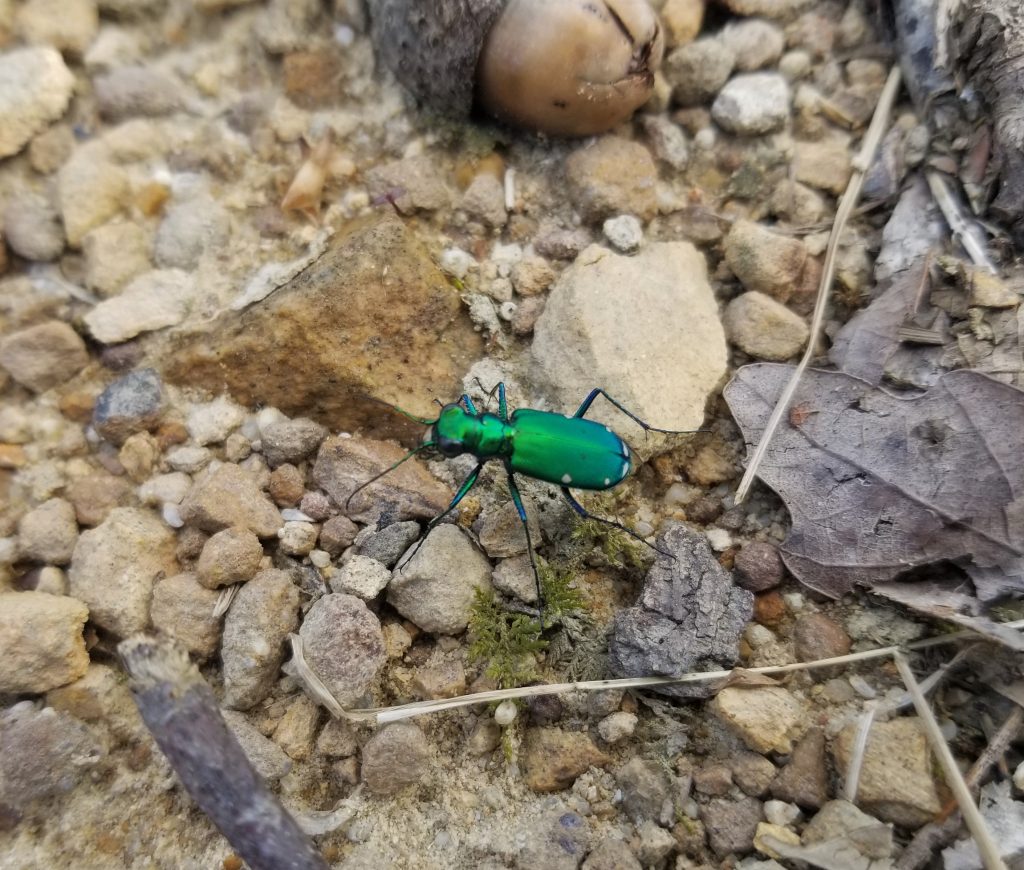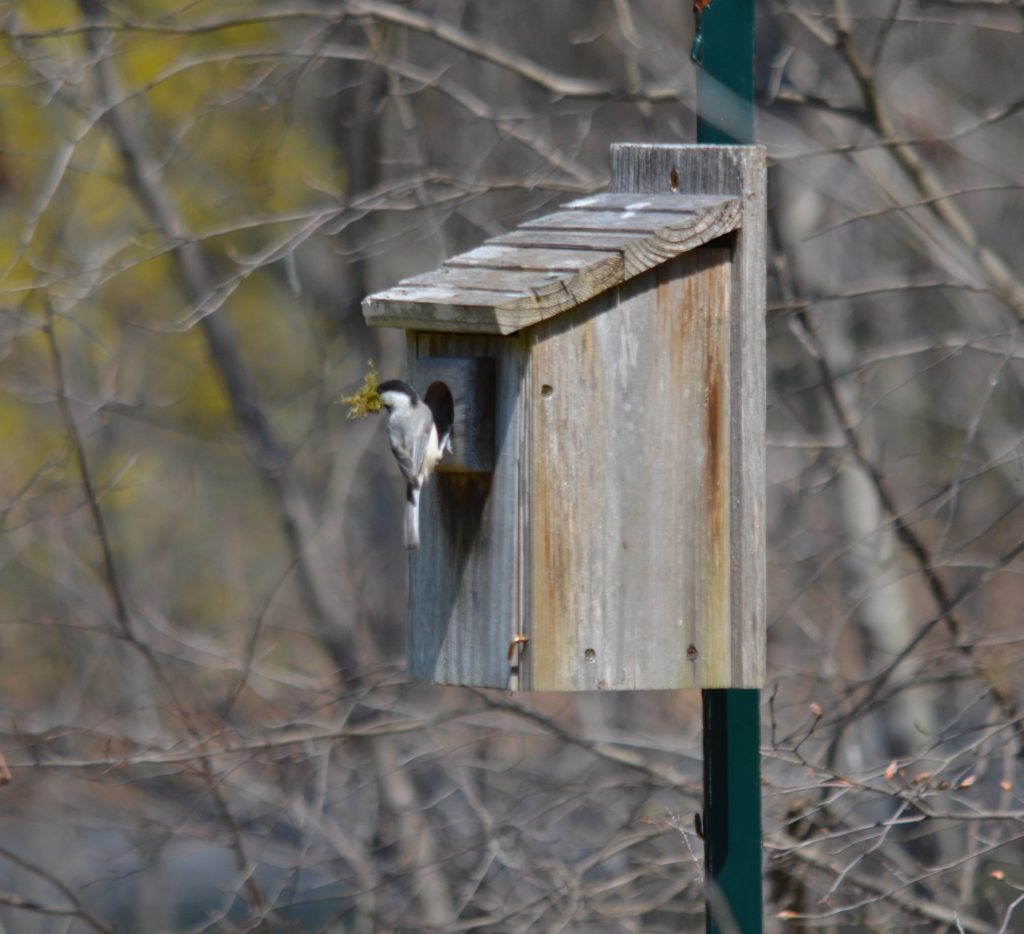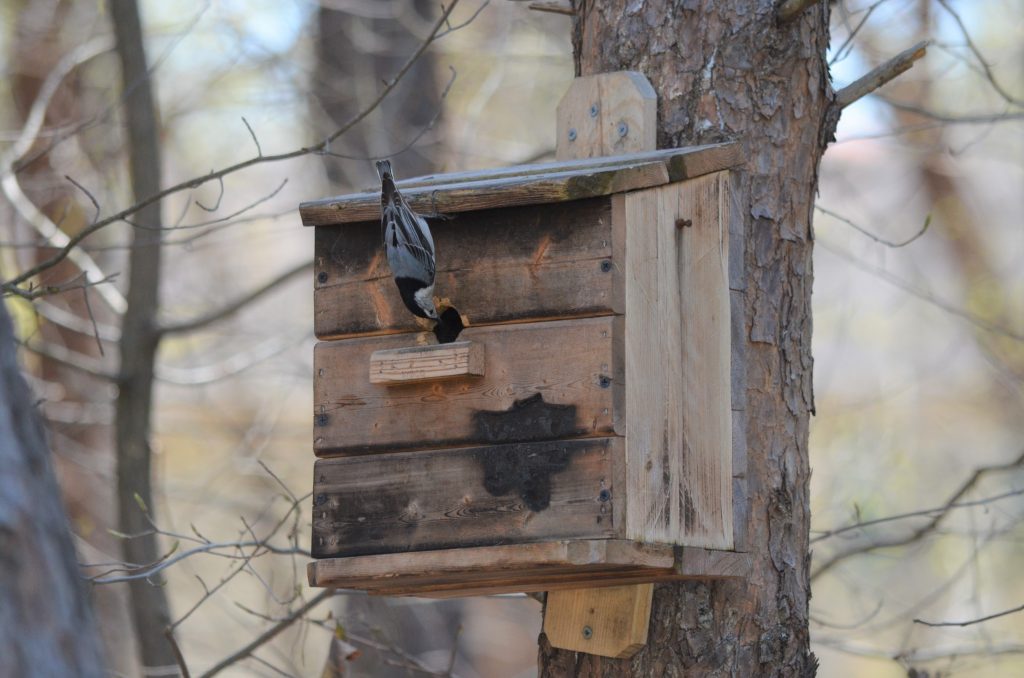There was an eerie silence in the forest that surrounded us when we picked up our paddles and turned our canoe downstream. The water was dark, like the color of coffee before any creamer is added. We could not see the bottom of the small, meandering creek, even though it was only 4’ below the bottom of our boat. But the trees! The giant, ancient trees that towered over us. Many of them growing right out of the water, just as they have been for hundreds of years. Trees like Water Tupelo and Bald Cypress in and along the water, and titans such as Loblolly Pine and Cherrybark Oak growing on the uplands. These are the real champions of this special place!
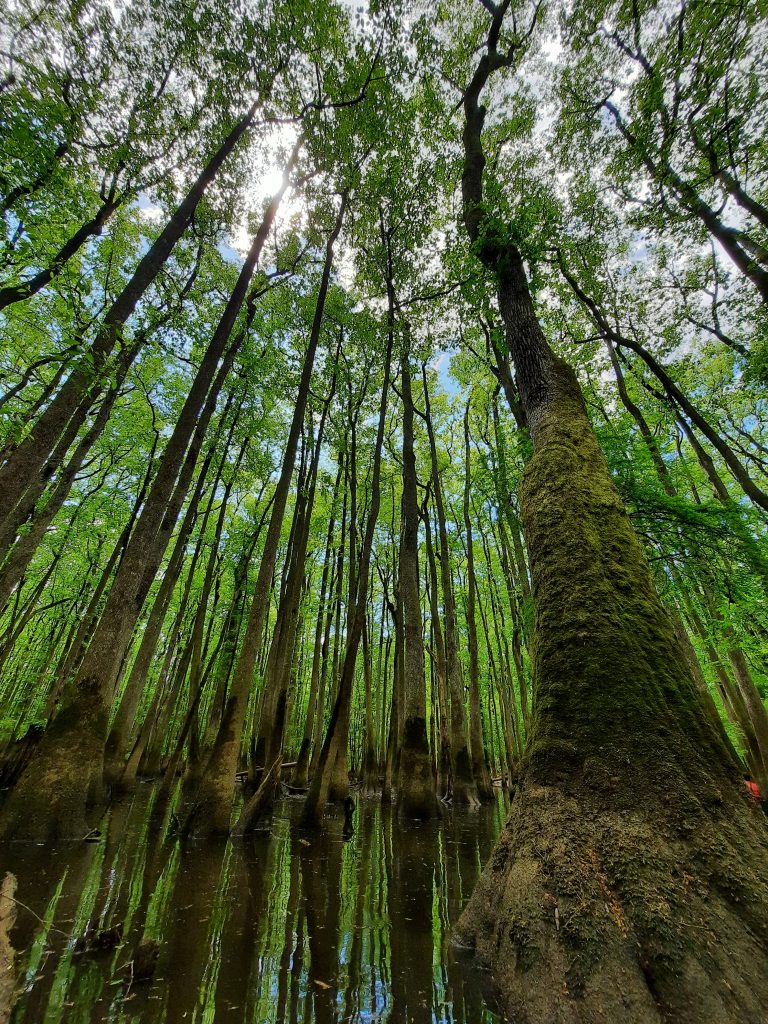

We were in the heart of Congaree National Park, about 20 miles south of Columbia, South Carolina.

It’s a park that holds mysterious wonders around every bend of its rivers and streams. A landscape that is shaped, and reshaped, by water. Congaree National Park, is home to the largest intact expanse of old growth bottomland hardwood forest remaining in the southeastern United States. Waters from the Congaree and Wateree Rivers sweep through the floodplain, carrying nutrients and sediments that nourish and rejuvenate this ecosystem and support the growth of national and state champion trees. Congaree National Park is part of the internationally-recognized Congaree Biosphere Reserve.

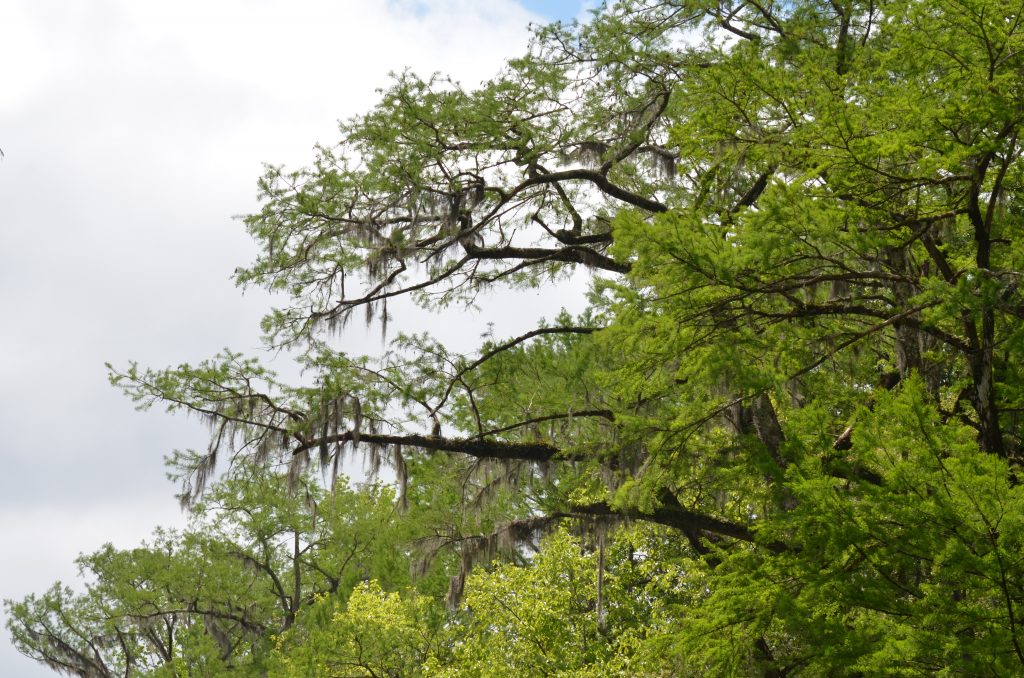
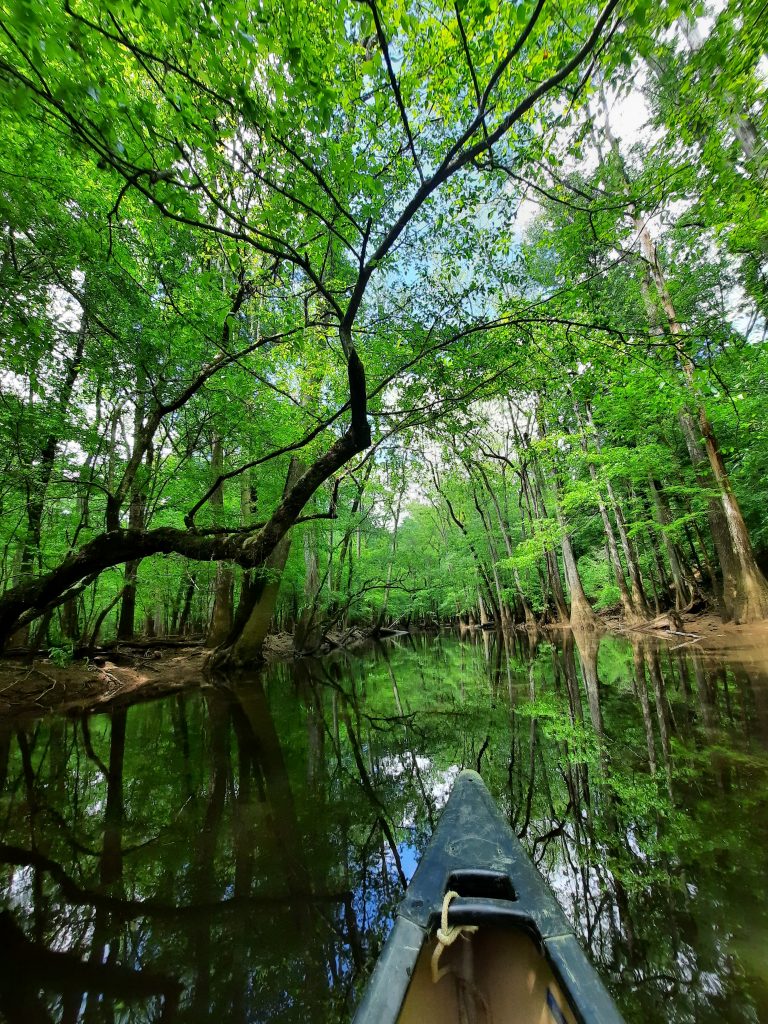
Though known for its unique natural features such as magnificent stands of bald cypress and tremendous biodiversity, the landscape of Congaree has a rich cultural heritage as well. People have been using the floodplain for many purposes for over 13,000 years, long before it became a national park.
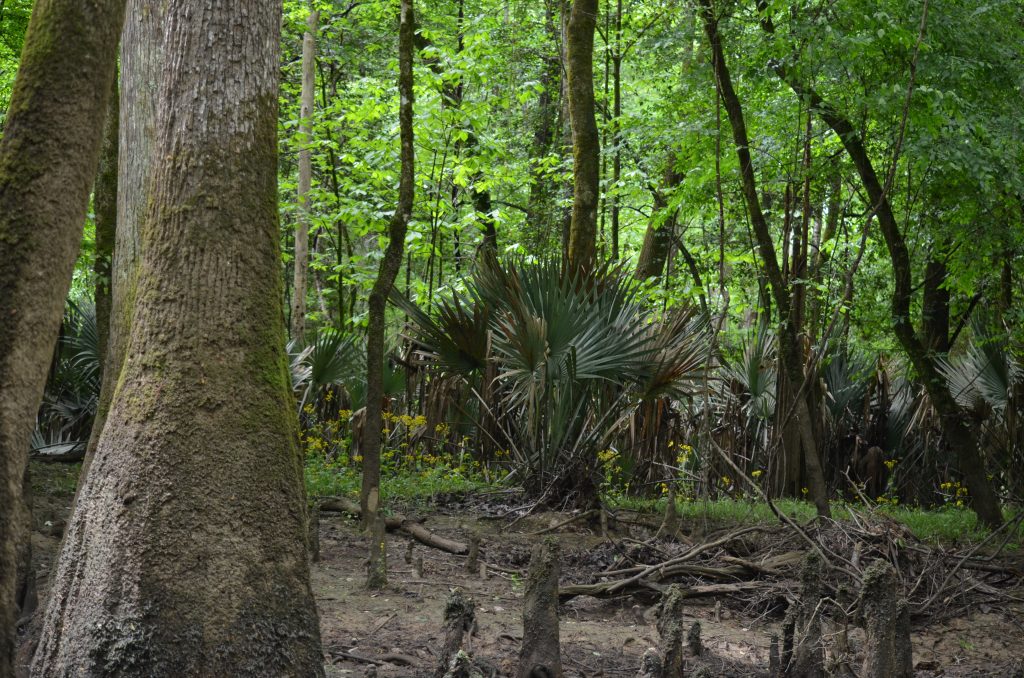
While water has been an enduring force that has shaped this landscape, humans have left their mark as well. From prehistoric natives to Spanish explorers, Revolutionary War patriots to escaped slaves, loggers and conservationists, this forest landscape is rich in the stories of the people who have called it both a home and a refuge, and have helped to make it what it is today.

Our short visit to Congaree included a 3-hour leisurely canoe trip on Cedar Creek, one of the park’s many small tributaries. As we paddled, we gazed at the large “swamp trees” that were growing from the water’s edges, covered with hanging Spanish Moss, on both sides. One of the coolest parts of our float trip included a couple short excursions away from the main creek channel, where our guide led us into the flooded backwaters of this age-old forest. At times, the water was less than a foot deep, as we squeezed between 4-foot diameter tupelo and cypress trees, as Swainson’s Warblers darted past, and Banded Water Snakes rested on many stumps.

For a couple brief hours, you could imagine yourself as an early explorer to this area, poking your way through this shadowy, strange landscape. Although you had look closely, the area was rich with wildlife, including many snakes and lizards that were resting on dead stumps and trees, turtles, including Yellow-eared Sliders that were hanging out on semi-emerged logs and Box Turtles, marching on the banks of the stream in search of an easy meal.



If we listened close, we heard the “sweet, sweet, sweet” song of the Prothonatary Warbler and the loud drumming of the Pileated Woodpecker. It was a very enjoyable “bucket list” destination, and one we will never forget!

As we departed for home, we made one last stop, and visited Carolina Sandhills National Wildlife Refuge in northern South Carolina. This 47,850-acre refuge was established to restore t and manage restore the rapidly diminishing longleaf pine/wiregrass ecosystem. But our real goal was to catch sight of the rare, Red-cockaded Woodpecker, a Federally Endangered bird species. Carolina Sandhills NWR is home to the largest population of this rare bird on any National Wildlife Refuge.


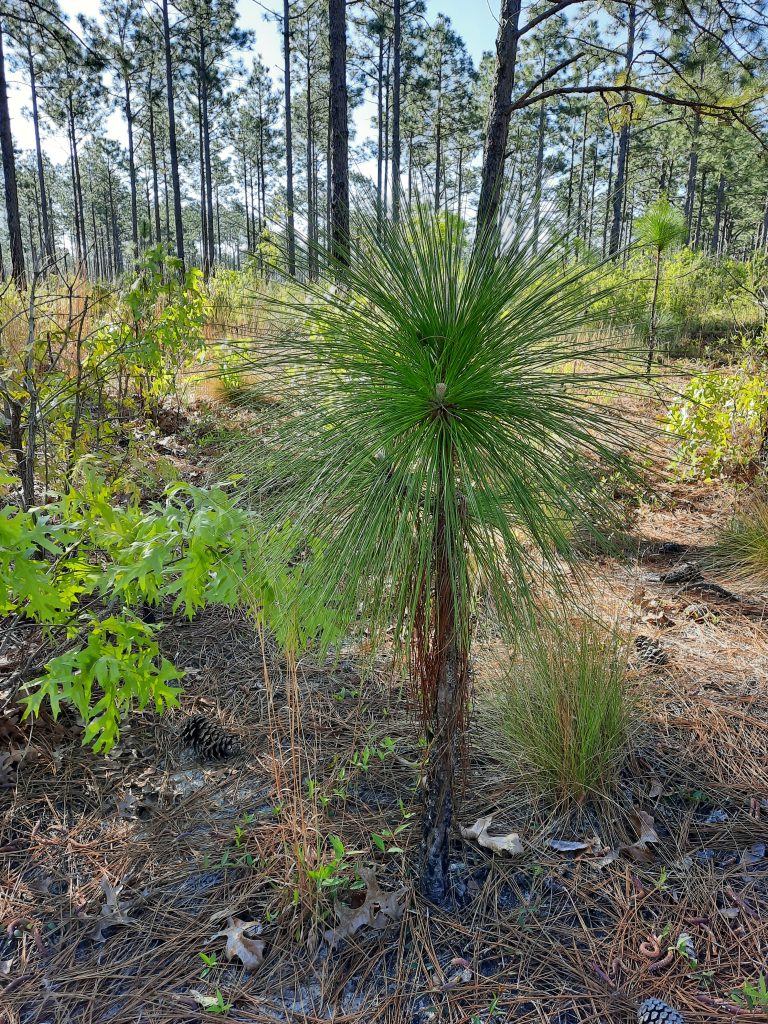
These small woodpeckers are unique in two ways. First, it is the only woodpecker that excavates its nesting and roosting cavities in living trees: preferably old-growth longleaf or loblolly pines. Second, the red-cockaded woodpecker lives within a tight-knit extended family community of breeding birds and helper birds. We chose to visit now since they’re just starting their breeding season, which is the best time to see them. We were not disappointed. We saw a few of them right along the refuge’s Wildlife Drive-with a little help! Earlier, we learned that the trees they were currently using for nesting (or did last season) were marked with two white bands painted on them. If you see one of these trees, stop, wait, listen and look….and maybe if you were lucky, you might see one of these little woodpeckers fly to one of the excavated holes, or from tree to tree. On our last stop next to several marked trees, we heard soft “pecking” and caught sight of three of them searching for insects in the bark of nearby trees. They were cool little critters to see, and we felt privileged that we got a chance to see this unique, scarce songbird!




Overall, we had a quick, but very enjoyable trip to the Palmetto State, and look forward to a return visit soon! Enjoy, and take some time to Get and About!









